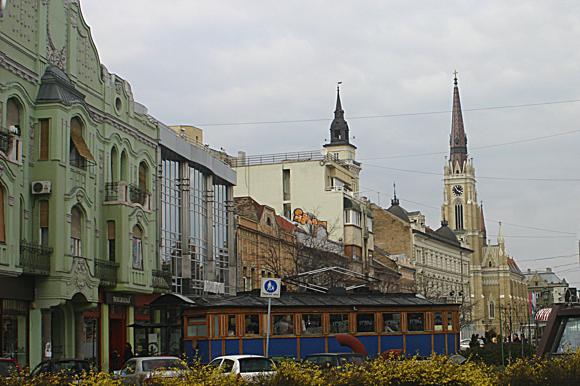Teams, tales and tips – a guide to the local game
To bolster Hungarian influence in areas that formed part of the country before World War I, Budapest has been bankrolling a handful of top-flight clubs beyond the country’s current borders. Each has a spanking new stadium, each attracts significant support among the local Hungarian population.
Compared to their counterparts in Slovakia, Croatia and Romania, Topolyai Sport Club (TSC) in Bačka Topola, Serbia, have been the most successful, qualifying for the Champions League Third Qualifying Round in 2022 before giving hosts West Ham a fright in the group stage of the Europa League.
While the club’s current success is a fairly recent phenomenon – it was 2018 when Hungarian Prime Minister Viktor Orbán attended the unveiling of the local football academy – Bačka Topola has long produced footballers and managers of international quality.
It’s a shared Hungarian and Serbian history that dates back to 1913, conveniently allowing the Bačka Topola city museum to host the exhibition TSC 110 in September 2023.
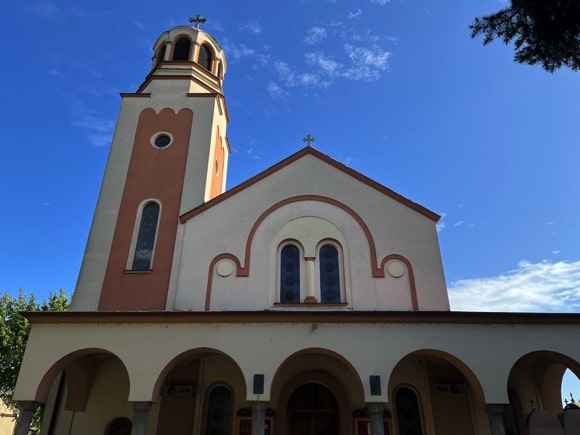

The founding of Topolyai Sport Club came when the town, Topolya to Hungarians, was recovering from a significant fire. Industrialised and urbanised, its straight roads lined with the poplar trees it’s named after, Topolya embraced football a few years after the major clubs in Budapest had been founded.
The man credited by all sources for having brought football here is Károly Beer, although next to nothing is known about him, just that he was another entrepreneur from the late Habsburg era. As the empire collapsed after World War I, so Topolya was swallowed up by Serbia as part of the nascent Yugoslavia.
To celebrate this fact, the authorities renamed the football team Jugoslovenski Atletski Klub (JAK) and built a new stadium in City Park in 1930. After a brief return into the Magyar fold during World War II, which is when later Hungary national team manager György Mezey was born here, the club became known as Egység (‘Unity’, Eđšeg in Serbian) in the immediate post-war Tito era.
Hungarians, as now, formed the majority of the population. This was where Jenő Kálmár, top scorer of the great MTK Budapest of the 1920s, winner of 15 caps for Hungary, ended his playing career. Returning to Budapest, he became head coach of the great Honvéd side of the Puskás era, the club team almost entirely composed of members of Hungary’s formidable national XI. Having played alongside Gusztáv Sebes at MTK, Kálmár acted as his assistant at national level.
Like Puskás, Kálmár exiled himself to Spain after the 1956 Uprising in Budapest, managing Granada and Málaga with reasonable success.

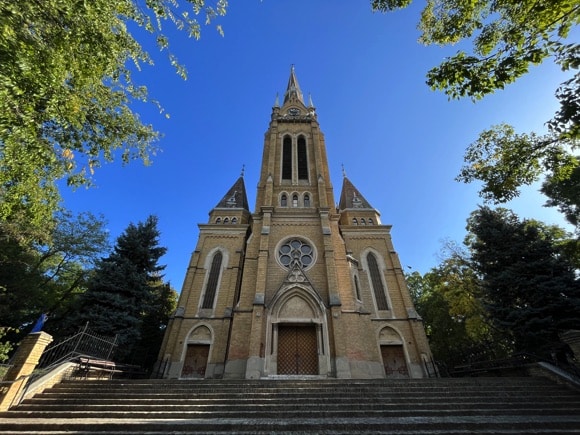
Back in Bačka Topola, as FK AIK, Kálmár’s former club spent four seasons in the second tier of the strong Yugoslav league in the early 1980s, their squad a mix of Magyar and Serb names. The most notable was Miklós Ország, born in nearby Kishegyes, a midfielder who joined AIK after two seasons on the books of Red Star Belgrade.
Team captain during the most successful period in the club’s history prior to modern times, Ország then went to Hungarian-run Sydney St George, shortly after they were crowned national champions of Australia. A minute’s silence was held at a Topola game in 2022 after he died.
While the club struggled in the 1990s after the collapse of Communism and régime change, AIK continued to attract the considerable young talent from the area. Born in Bačka Topola, later Ajax, Southampton and Serbia star Dušan Tadić first played his football here, before joining the region’s big hitters, Vojvodina, in 2002.
While his origins are obviously an accident of birth, deep-rooted tactical know-how would have influenced his football coaches before he turned professional at 18.


The other major influence in this patchwork zone of nationalities has been horsemanship. The reason why football took off relatively late here, when it had long taken root in other towns around Hungary back then, could have been the focus on breeding champion thoroughbreds.
A stud farm was established at neighbouring Zobnatica in the 1700s, where the illustrious Törley family, producer of Hungarian champagne, had their estate. Yugoslav leader Marshal Tito even once celebrated New Year’s Eve here.
When foreign investment arrived after the break-up of Yugoslavia, it wasn’t poured into football, but rather the land where horses once cantered. Seeing no future in sport, the estate’s new owners from Abu Dhabi turned the fields over to cultivation.
Football looked to be going the same way. AIK dissolved in 2003 and their successors, FK Bačka Topola, merged with FK Bajša in order to be able to compete in the lowest levels of Serbia’s regional leagues. But the game still had its heritage and its stadium, the Gradski stadion dating back to the 1930s.
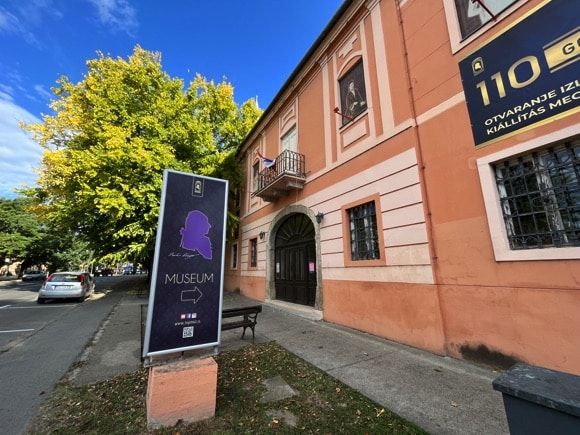

Slowly, a revival came thanks to János Zsemberi, a local Slovak-Hungarian agrarian who had made his fortune in the early 2000s installing internet and cable TV across the region after the UN lifted sanctions against Belgrade.
As he first backed FK Bajša and then engineered the fusion with Bačka Topola, so Budapest started to take notice. Rumour has it that the go-between was Frank Arok, locally born of Hungarian origin, who had coached the Australian national team through the 1980s, and who had mentioned the potential here to the powers-that-be in Hungary. Zsemberi duly received a phone call…
When the club held a centenary game in 2013, Partizan Belgrade the opposition, it was as Topolyai Sport Club (TSC), the new name change reflecting the growing Hungarian influence on sport in the region. TSC duly made the third tier in 2015.
As more money came in, so another promotion followed in 2017. That same year, the European Commission again allowed Hungary to grant state aid to football teams in the form of corporate tax relief, known by the acronym TAO. The first such ruling, in 2011, led to billions of Hungarian forints, millions of euros, going into stadium construction across the country.
After 2017, this was ramped up considerably, and not just within Hungary’s modern-day borders. In 2021, a Hungarian news source estimated that over the previous decade, almost a trillion Hungarian forints, or €2.5 billion, had gone into sports clubs and federations through TAO, of which nearly 40% was allocated to football.
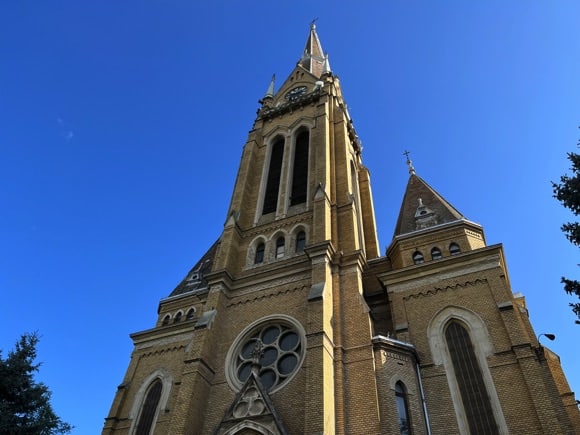
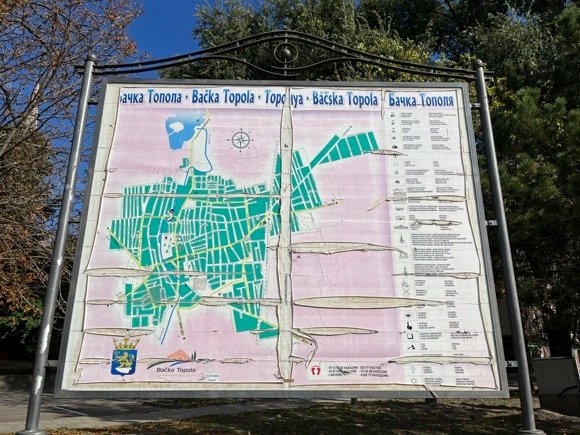
Here in Bačka Topola, this translated into the kind of financial backing to push TSC towards promotion to the top flight in 2018-19. At the start of that campaign, the man behind this Magyar football revolution, Hungarian Prime Minister Viktor Orbán, visited to open the TSC Football Academy.
Meanwhile, yet another football stadium was being built in the Hungarian-speaking world, on the site of the former Gradski stadion in the western outskirts of town. TSC not only began their debut SuperLiga season on a roll, going the first ten games unbeaten, but did so having to play all home games in Senta 40km away.
Qualifying for Europe in 2020, TSC made another stunning first appearance, albeit behind closed doors during the pandemic, a 6-6 draw (!) with FCSB, aka the former Steaua Bucharest, featuring two stoppage-time goals and nine perfect penalties in the shoot-out. The failed attempt came from TSC’s Mihajlo Banjac.
The stress to succeed was now beginning to show, as revered coach Zoltán Szabó, who had come to the club in 2018, and had taken them from the second tier to Europe, died from a heart attack in December 2020. He was 48 years old.
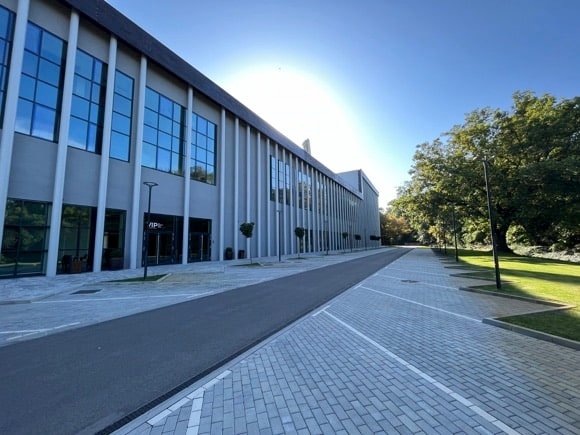
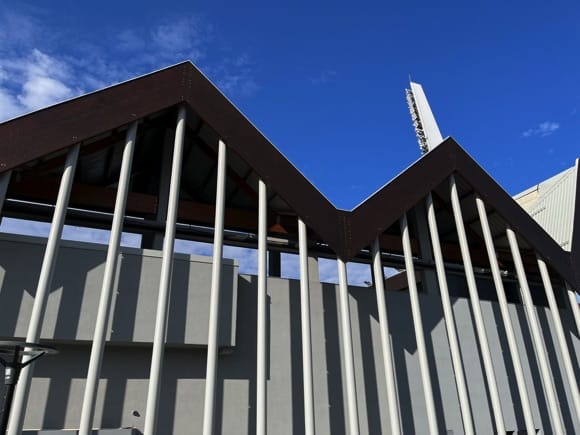
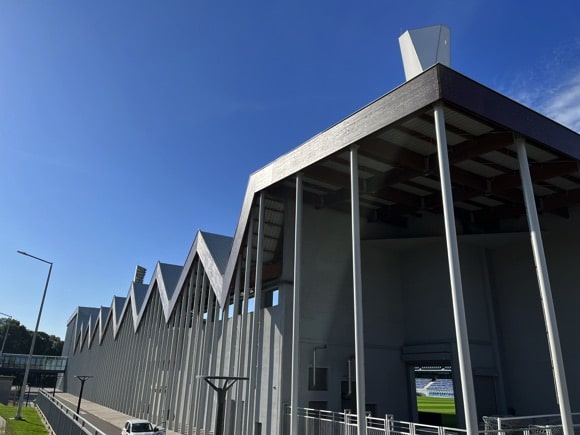
In September 2021, the TSC Arena opened with a visit from Hungarian giants Ferencváros, the showcase fixture prefaced by the playing of the Serbian and Hungarian anthems. Among the VIPs were the presidents of Hungarian clubs outside Hungary’s borders, from Slovakia, Croatia and Romania.
Also making their presence felt were the Blue Betyars, TSC’s recently found ultras group, the word betyár loosely translated as bandit, referring to the folklorish highwaymen who roamed Hungary in the 1800s. Despite popular support, TSC didn’t qualify for Europe again until 2023, edging out Čukarički on goal difference.
While easily outclassed by Braga in the Second Qualifying Round of the Champions League, TSC had by now generated raucous travelling support, delighted to follow their team to the unlikely setting of the London Stadium for a Europa League fixture with West Ham. Treated to a shock opening goal following a defensive error, the Blue Betyars may then have been given a reality check but their team left the field with heads held high. Better was to follow in the next game, when TSC pulled back a 0-2 scoreline at home to peg Olympiacos – that’s Olympiacos, the record Greek champions – to 2-2.
What happens next is unclear. While attracting support from across Vojvodina and southern Hungary, TSC represents a town of barely 15,000 people and play in a stadium whose capacity is 4,500. Average domestic gates, for the recent season in which the team qualified for the Champions League for the first time, weren’t even half that figure.
As long as TSC are bankrolled by Budapest, the meagre revenue from Serbian football hardly matters. Sooner or later, though, that football academy is going to have to produce another Tadić.
Getting Around
Arriving in town, local transport and tips



The nearest major international airport to Bačka Topola is Belgrade, 144km (90 miles) south. From the airport, minibus A1 every 25mins runs to Savski trg in town before terminating at Trg Slavija, journey time 30mins, tickets RSD300/€2.50, pay the driver. If you’re taking a taxi, always agree a price beforehand – there should be a fixed fare of RSD1,800/€15 but RSD2,500/€21 is not unknown.
Belgrade train and bus stations are alongside Savski trg. A bus to Bačka Topola should leave every 2hrs or so, take around 3hrs and cost about RSD1,200/€10. There is currently no train service, as this route forms part of the long-awaited Budapest-Belgrade rail line, currently under construction. The nearest you can get to is Novi Sad, 35mins from Belgrade and 75km (47 miles) from Bačka Topola.
This is also means there is no direct service from Budapest. From Novi Sad, a bus runs every 2hrs or so, takes around 1hr 15mins and costs RSD600/€5.
Bačka Topola bus station is at Trg dr Hadži Janoša, just over the road from the main hotel/restaurant in town, the Gurman, and a short walk over the park from the stadium. The town’s few other cafés, shops and banks are on or off this main road, Glavna. Everything is walkable, there are only regional buses. For a taxi, call Kares in nearby Bajša (+381 64 317 9031).
Where to Drink
The best pubs and bars for football fans
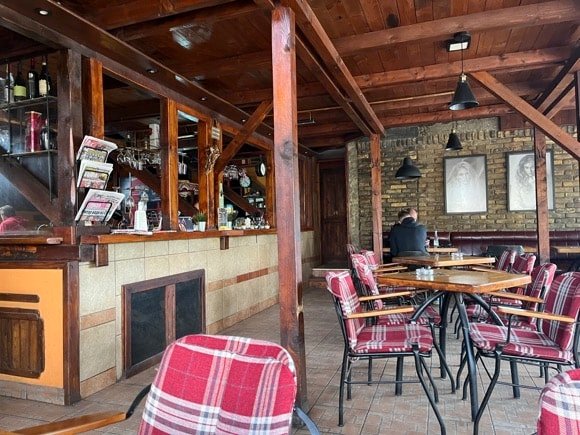
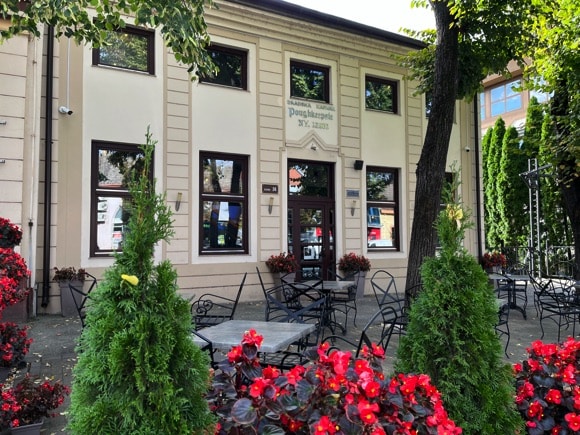



The town’s scant but welcome drinking spots can be found along or just off the main drag of Glavna. These include the Gradska kafana – every town in former Yugoslavia has one of these, the City Café where everyone meets. This one is large enough to squeeze in most of Bačka Topola, also factoring in the front terrace in a pretty courtyard garden. It doubles up as a restaurant, a decent one, but its relationship with Poughkeepsie, New York State, remains a mystery despite the prominent sign on the front of the building.
Nearby on Boračka, the Caffe & Food Bar Palma-Lennon may have once shared an affinity with the Fab Four but is now a homely two-storey pizzeria, all wood and bare brick, a place to read the newspaper (remember those?) over coffee and beer by day. Sport is shown, particularly basketball, big in these parts.
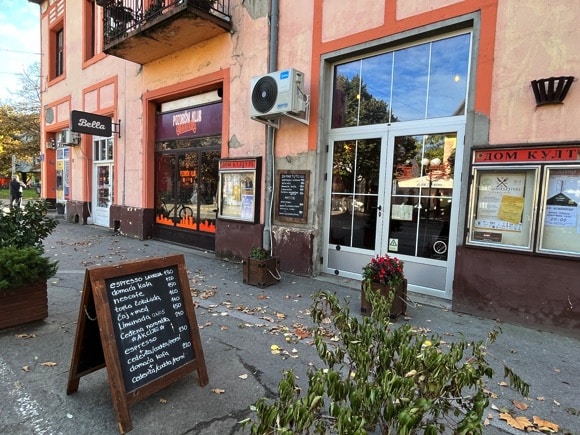
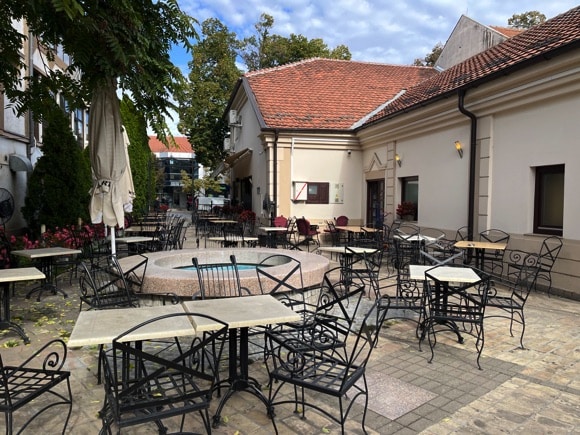
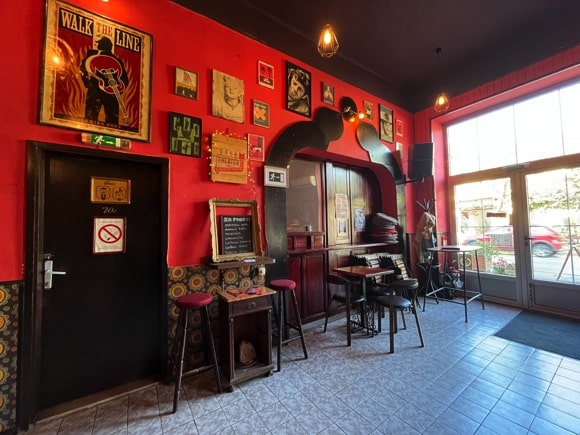
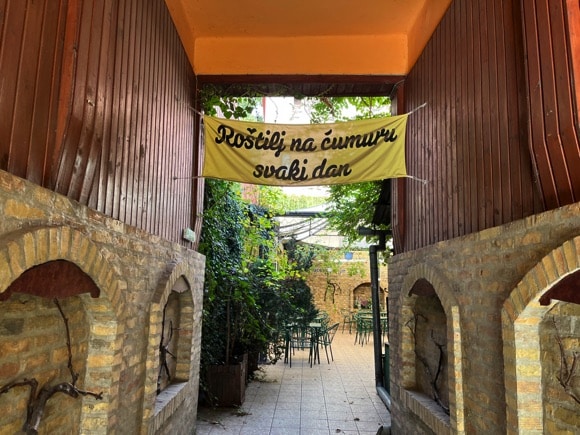
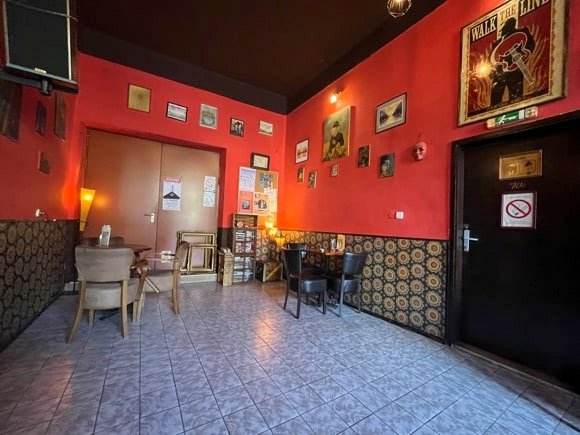

For something slightly alternative, the Izlog Ideja (‘Idea Shop Window’) at Glavna 12 caters to the town’s theatre and cultural centre, hence the arty décor and student clientele. Look out for a couple of rare beers, a nice change from the standard draught Serbian Jelen.
Past the junction with Allée des Colverts, named by the Habsburgs after the local wild ducks once found in the City Park here, Glavna becomes Petefi brigade.
Gurman 024, a pub, restaurant and the town’s only lodging. In the same Petkov family who opened it in 1986, this is the most prominent meeting place in town, once a smoky tavern, now a sturdy, traditional hostelry. In the separated pub and restaurant, you can choose from the fruit brandies, rakija, for which the Gurman is famous, including cherry, mulberry and quince, something to help the hearty local food go down.
The garden is popular in summer, when the terrace of the nearby BB Pub on the edge of City Park comes into its own. Matches are shown inside – note the TSC and Ferencváros scarves over the bar.
Where to stay
The best hotels for the stadium and town centre


Apart from private rooms, the only lodging in town is at the homely, family-run Gurman 024, just across from the bus station and the other side of City Park from the stadium. Once just a popular local pub, it converted 13 rooms for guests in 2013 when ever more visitors were coming to Bačka Topola for business and football.
Comfortable and affordable, each with its own shower, these provide a suitable place to rest your head if you’re here for a game. Attached is a traditional restaurant and pub, so there’s not too far to fall if you overdo it on the local fruit brandy for which the Gurman is well known.



